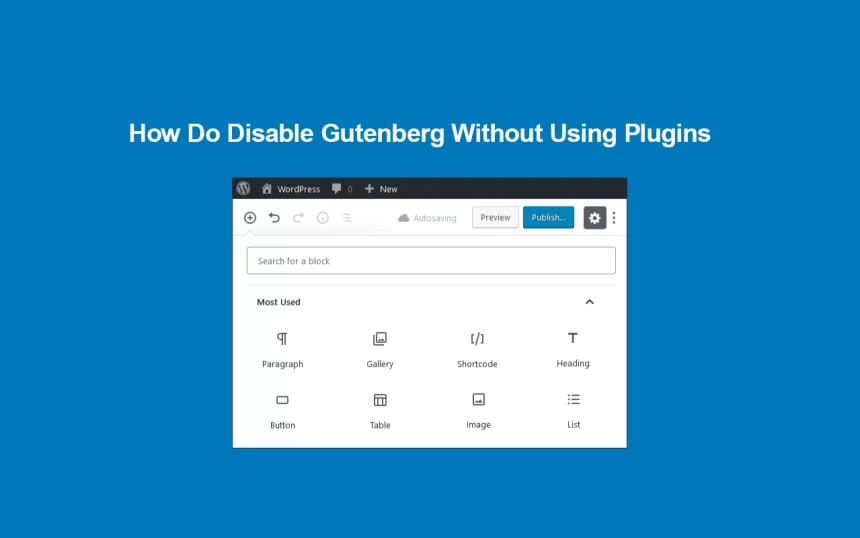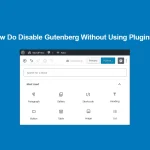“Gutenberg” Because of the poor editing experience, not everyone wants to utilize WordPress’s default editor, Gutenberg. Additionally, Gutenberg loads a lot of inline styles and CSS files on the front end, which will slow down the loading of your website. This post will show you how to use basic code without plugins to disable Gutenberg.
// Disable Gutenberg on the back end.
add_filter( ‘use_block_editor_for_post’, ‘__return_false’ );
// Disable Gutenberg for widgets.
add_filter( ‘use_widgets_block_editor’, ‘__return_false’ );
add_action( ‘wp_enqueue_scripts’, function() {
// Remove CSS on the front end.
wp_dequeue_style( ‘wp-block-library’ );
// Remove Gutenberg theme.
wp_dequeue_style( ‘wp-block-library-theme’ );
// Remove inline global CSS on the front end.
wp_dequeue_style( ‘global-styles’ );
// Remove classic-themes CSS for backwards compatibility for button blocks.
wp_dequeue_style( ‘classic-theme-styles’ );
}, 20 );





Hi, this is a comment.
To get started with moderating, editing, and deleting comments, please visit the Comments screen in the dashboard.
Commenter avatars come from Gravatar.